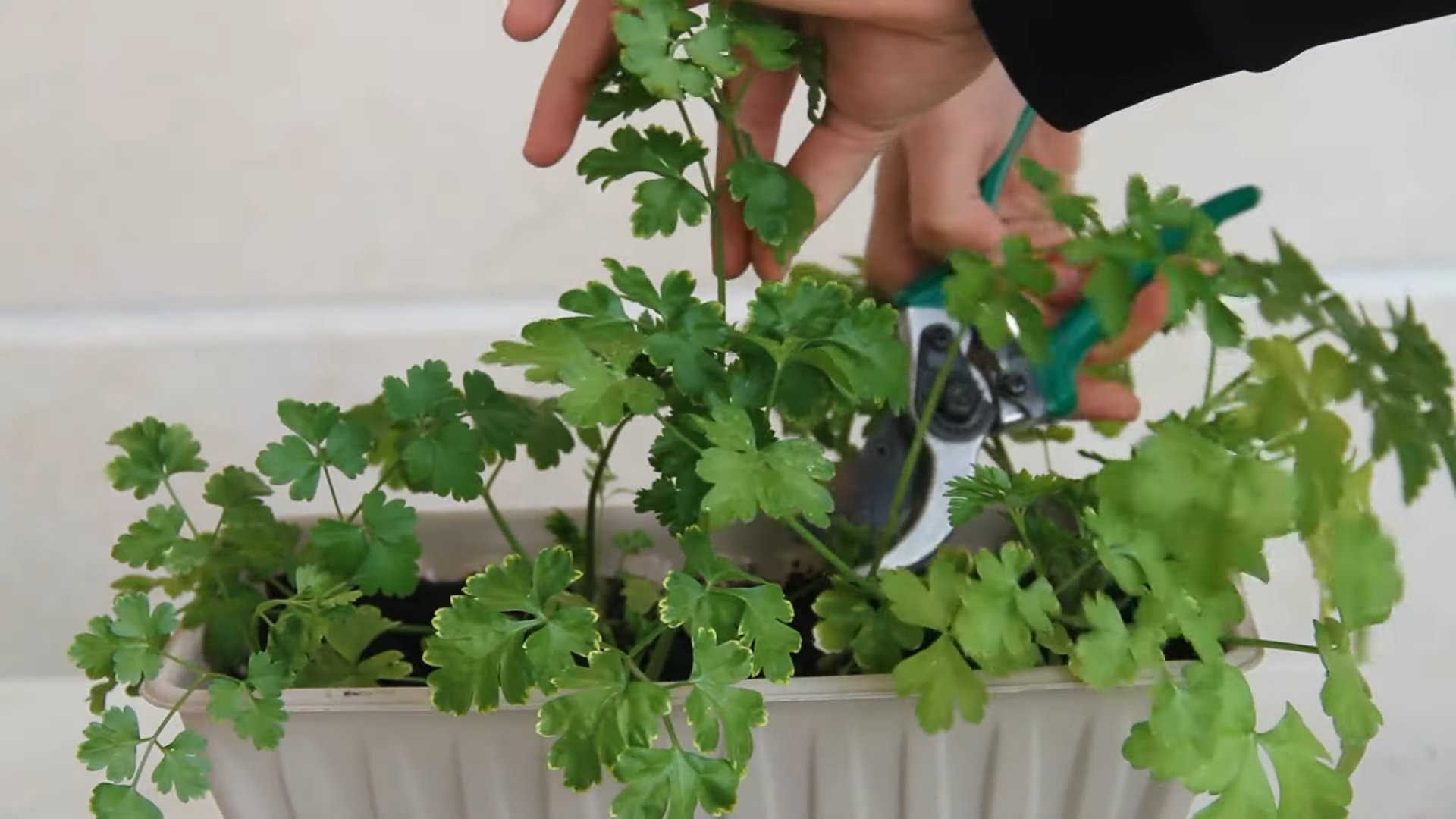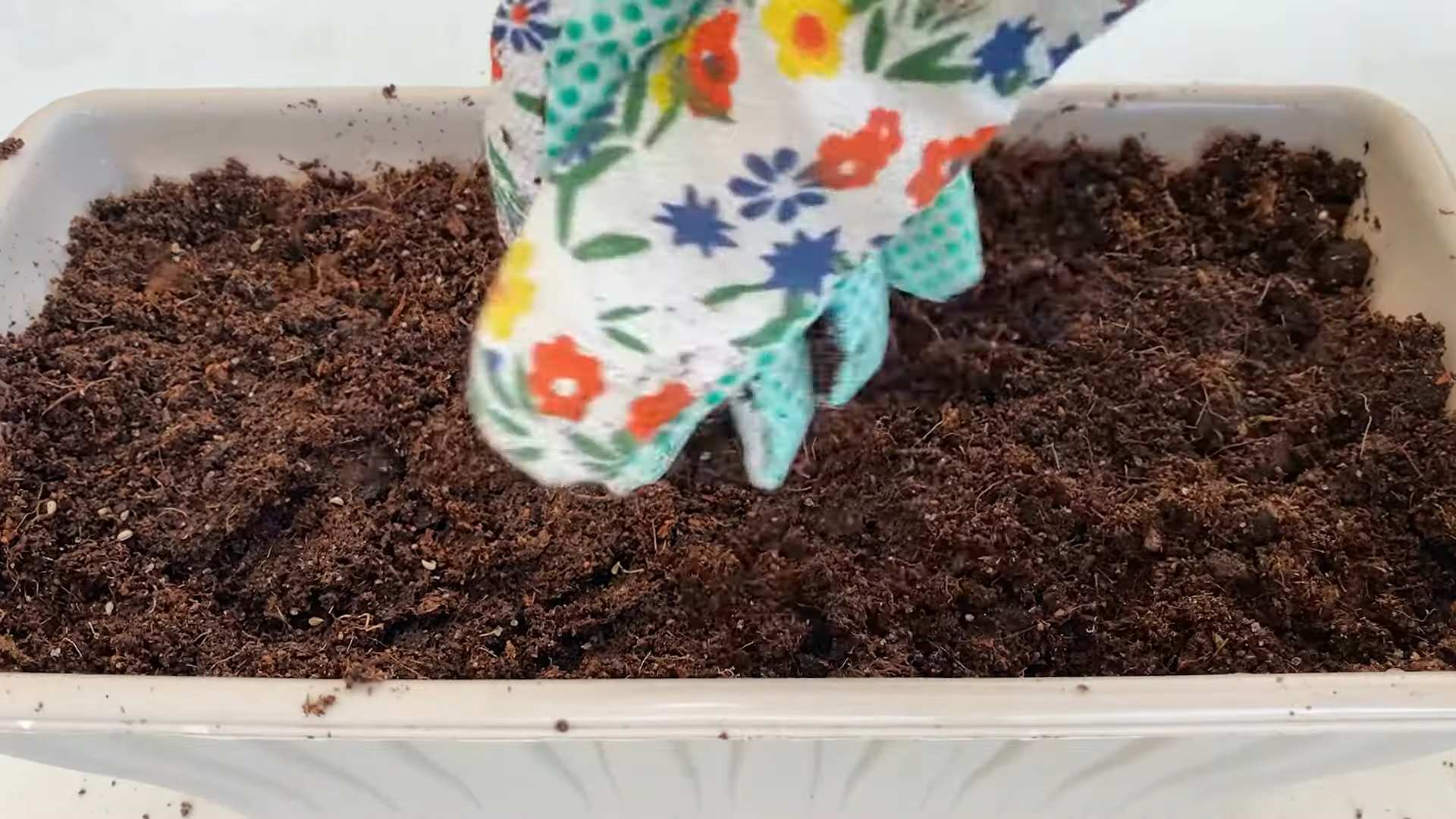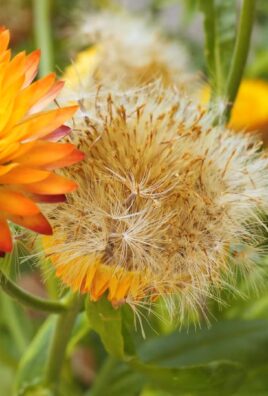Growing Parsley Indoors can seem daunting, but trust me, it’s easier than you think! Imagine fresh, vibrant parsley always at your fingertips, ready to elevate your culinary creations. No more last-minute grocery store runs or wilted herbs from the fridge. I’m going to show you how to bring the garden inside and enjoy the delightful flavor of homegrown parsley year-round.
Parsley has been cherished for centuries, not just for its culinary uses but also for its medicinal properties. The ancient Greeks even crowned victors with parsley wreaths! Today, while we might not be crowning anyone, we can certainly appreciate the fresh, peppery taste it adds to our dishes. But why struggle with outdoor gardens when you can easily master growing parsley indoors?
In today’s busy world, convenience is key. Many of us lack the space, time, or ideal climate for traditional gardening. That’s where the magic of indoor gardening comes in. By learning a few simple tricks and hacks, you can cultivate your own thriving parsley patch right on your windowsill. This DIY guide will provide you with all the essential information you need to successfully grow parsley indoors, from choosing the right container to providing optimal light and water. So, let’s get started and unlock the secrets to a bountiful indoor parsley harvest!

Growing Parsley Indoors: A Beginner’s Guide
Hey there, fellow plant enthusiasts! Ever dreamt of having fresh, vibrant parsley right at your fingertips, no matter the season? Well, you’re in the right place! I’m going to walk you through the surprisingly simple process of growing parsley indoors. Trust me, it’s easier than you think, and the reward of having fresh herbs readily available is totally worth it.
Choosing the Right Parsley Variety
Before we dive into the nitty-gritty, let’s talk parsley types. There are two main varieties you’ll encounter: curly parsley and flat-leaf (Italian) parsley.
* Curly Parsley: This is the one you often see as a garnish. It has a slightly milder flavor than its flat-leaf cousin.
* Flat-Leaf (Italian) Parsley: This variety boasts a more robust, peppery flavor, making it a favorite for cooking.
Honestly, the choice is yours! I personally prefer flat-leaf parsley for its bolder taste, but curly parsley is perfectly fine too. Consider what you’ll be using it for most often when making your decision.
Gathering Your Supplies
Okay, let’s get our hands dirty (figuratively, for now!). Here’s what you’ll need to get started:
* Parsley Seeds or a Parsley Plant: You can start from seeds, which is more economical but takes longer, or buy a small parsley plant from a nursery for instant gratification.
* Pot with Drainage Holes: A pot that’s at least 6 inches in diameter is ideal. Good drainage is crucial to prevent root rot.
* Potting Mix: Use a high-quality potting mix that’s well-draining. Avoid using garden soil, as it can compact and hinder growth.
* Grow Lights (Optional but Recommended): Parsley needs a lot of light, so if you don’t have a sunny windowsill, grow lights are a must.
* Watering Can or Spray Bottle: For gentle watering.
* Small Trowel or Spoon: For planting.
* Fertilizer (Optional): A balanced liquid fertilizer can help boost growth.
Planting Parsley from Seeds
Starting from seeds is a rewarding experience, but it requires a bit more patience. Parsley seeds can be slow to germinate, so don’t get discouraged if you don’t see sprouts right away.
1. Prepare the Pot: Fill your pot with potting mix, leaving about an inch of space at the top. Gently pat down the soil.
2. Sow the Seeds: Sprinkle the parsley seeds evenly over the surface of the soil. You can sow them quite densely, as you can always thin them out later.
3. Cover the Seeds: Lightly cover the seeds with a thin layer of potting mix (about 1/4 inch).
4. Water Gently: Use a spray bottle or watering can with a gentle nozzle to moisten the soil. Be careful not to dislodge the seeds.
5. Create a Humid Environment: Cover the pot with plastic wrap or a plastic bag to create a humid environment. This will help with germination.
6. Place in a Warm Location: Put the pot in a warm spot, ideally around 70-75掳F (21-24掳C).
7. Be Patient: Parsley seeds can take anywhere from 2 to 4 weeks to germinate. Keep the soil consistently moist but not soggy. Remove the plastic wrap once you see sprouts.
8. Thin the Seedlings: Once the seedlings are a few inches tall, thin them out so that they are spaced about 2-3 inches apart. This will give them enough room to grow.
Planting a Parsley Plant
If you’re short on time or patience, buying a parsley plant from a nursery is a great option.
1. Prepare the Pot: Fill your pot with potting mix, leaving about an inch of space at the top.
2. Remove the Plant from its Container: Gently squeeze the sides of the nursery pot to loosen the plant. Carefully remove the plant, being careful not to damage the roots.
3. Loosen the Roots: Gently loosen the roots of the plant with your fingers. This will encourage them to spread out into the new pot.
4. Plant the Parsley: Place the parsley plant in the center of the pot. Make sure the top of the root ball is level with the surface of the soil.
5. Fill with Potting Mix: Fill in the remaining space around the plant with potting mix. Gently pat down the soil.
6. Water Thoroughly: Water the plant thoroughly until water drains out of the bottom of the pot.
Providing the Right Environment
Parsley thrives in specific conditions. Getting these right is key to a happy and productive plant.
* Light: Parsley needs at least 6-8 hours of sunlight per day. If you don’t have a sunny windowsill, use grow lights. Place the lights about 6-12 inches above the plant.
* Watering: Keep the soil consistently moist but not soggy. Water when the top inch of soil feels dry to the touch. Avoid overwatering, as this can lead to root rot.
* Temperature: Parsley prefers temperatures between 60-75掳F (15-24掳C).
* Humidity: Parsley likes moderate humidity. If your home is very dry, you can increase humidity by placing the pot on a tray filled with pebbles and water. Make sure the bottom of the pot isn’t sitting directly in the water.
* Fertilizing: Fertilize your parsley plant every 2-4 weeks with a balanced liquid fertilizer. Follow the instructions on the fertilizer label.
Harvesting Your Parsley
The best part! Harvesting your parsley encourages growth and provides you with fresh herbs.
1. Wait Until the Plant is Mature: Don’t start harvesting until the plant is at least 6 inches tall.
2. Harvest from the Outside: Cut the outer stems of the plant, leaving the inner stems to continue growing.
3. Cut at the Base of the Stem: Use sharp scissors or pruning shears to cut the stems at the base of the plant.
4. Don’t Over-Harvest: Avoid removing more than one-third of the plant at a time.
Troubleshooting Common Problems
Even with the best care, you might encounter some problems. Here are a few common issues and how to address them:
* Yellowing Leaves: This could be a sign of overwatering, underwatering, or nutrient deficiency. Check the soil moisture and adjust your watering accordingly. If the soil is consistently moist, let it dry out a bit before watering again. If the soil is dry, water thoroughly. You can also try fertilizing the plant.
* Leggy Growth: This is usually caused by insufficient light. Move the plant to a sunnier location or use grow lights.
* Pests: Parsley can be susceptible to pests like aphids and spider mites. Inspect your plant regularly for signs of infestation. If you find pests, you can try washing them off with a strong stream of water or using an insecticidal soap.
* Root Rot: This is caused by overwatering and poor drainage. Make sure your pot has drainage holes and that you’re not overwatering the plant. If you suspect root rot, you can try repotting the plant in fresh potting mix.
Extending the Life of Your Parsley
Parsley is a biennial plant, meaning it typically lives for two years. However, it often bolts (goes to seed) in its second year, which can make the leaves bitter. Here are a few tips to extend the life of your parsley plant and prevent bolting:
* Pinch Off Flower Buds: If you see flower buds forming, pinch them off to prevent the plant from bolting.
* Provide Consistent Moisture: Parsley is more likely to bolt if it’s stressed by drought. Keep the soil consistently moist.
* Provide Shade During Hot Weather: Parsley prefers cooler temperatures. If you live in a hot climate, provide some shade during the hottest part of the day.
* Consider Starting New Plants: Even with the best care, parsley plants will eventually decline. Consider starting new plants from seeds or cuttings every year to ensure a continuous supply of fresh parsley.
Enjoying Your Homegrown Parsley
Now that you’ve successfully grown your own parsley, it’s time to enjoy the fruits (or rather, leaves!) of your labor. Fresh parsley can be used in a variety of dishes, from soups and salads to sauces and stews. It’s also a great garnish for adding a pop of color and flavor to your meals.
Here are a few ideas for using your homegrown parsley:
* Add it to soups and stews: Parsley adds a fresh, herbaceous flavor to soups and stews.
*

Conclusion
So, there you have it! Growing parsley indoors is not only achievable, but it’s also a remarkably rewarding experience. Imagine having fresh, vibrant parsley readily available, regardless of the season, to elevate your culinary creations. No more last-minute grocery store runs or settling for dried herbs that lack that bright, herbaceous punch. This DIY trick is a must-try for anyone who values fresh ingredients and enjoys a touch of green in their home.
The benefits extend beyond mere convenience. By growing your own parsley, you’re in control of its quality. You know exactly what goes into nurturing your plants, ensuring they are free from harmful pesticides and chemicals. Plus, the simple act of tending to your indoor garden can be incredibly therapeutic, providing a calming and grounding activity in our often-hectic lives.
But don’t stop there! Experiment with different varieties of parsley. Curly parsley offers a classic, slightly peppery flavor, while flat-leaf (Italian) parsley boasts a more robust and intense taste. Try growing both and see which you prefer, or even blend them for a unique flavor profile. You can also explore different container sizes and materials. Terracotta pots are aesthetically pleasing and allow for good drainage, while self-watering planters can simplify the watering process.
Consider companion planting. Parsley thrives alongside other herbs like basil and chives, creating a fragrant and productive indoor herb garden. You can even plant it near tomatoes or peppers, as parsley is said to repel certain pests.
And remember, growing parsley indoors is a journey of learning and discovery. Don’t be discouraged if you encounter a few challenges along the way. Every plant is different, and what works for one person may not work for another. The key is to be patient, observant, and willing to adapt your approach as needed.
We wholeheartedly encourage you to give this DIY trick a try. It’s a simple, affordable, and incredibly satisfying way to bring a touch of freshness and flavor into your life. Once you’ve experienced the joy of harvesting your own homegrown parsley, you’ll wonder why you didn’t start sooner.
Don’t forget to share your experiences with us! We’d love to hear about your successes, your challenges, and any tips or tricks you’ve discovered along the way. Post photos of your thriving parsley plants, share your favorite recipes that feature your homegrown herbs, and let’s create a community of indoor gardening enthusiasts. Your insights and experiences can inspire others to embark on their own parsley-growing adventures. Let us know if you have any questions about growing parsley indoors.
Frequently Asked Questions (FAQ)
What is the best type of parsley to grow indoors?
Both curly and flat-leaf (Italian) parsley varieties thrive indoors. Curly parsley is known for its decorative appearance and slightly milder flavor, while flat-leaf parsley offers a more robust and intense taste. The best choice depends on your personal preference and culinary needs. Consider growing both to experience the unique qualities of each.
What kind of soil should I use for growing parsley indoors?
Parsley prefers well-draining soil that is rich in organic matter. A good quality potting mix specifically formulated for herbs or vegetables is ideal. You can also amend a standard potting mix with compost or aged manure to improve its fertility and drainage. Avoid using garden soil, as it can be too heavy and may contain pests or diseases.
How much sunlight does indoor parsley need?
Parsley requires at least 6-8 hours of sunlight per day to thrive. A south-facing window is typically the best option, but an east- or west-facing window can also work if it provides sufficient light. If you don’t have access to enough natural light, you can supplement with a grow light. Position the grow light a few inches above the plants and keep it on for 12-14 hours per day.
How often should I water my indoor parsley?
Water your parsley when the top inch of soil feels dry to the touch. Avoid overwatering, as this can lead to root rot. Ensure that your pot has drainage holes to allow excess water to escape. During the warmer months, you may need to water more frequently than during the cooler months. Check the soil moisture regularly and adjust your watering schedule accordingly.
How often should I fertilize my indoor parsley?
Parsley benefits from regular fertilization, especially when grown in containers. Use a balanced liquid fertilizer diluted to half strength every 2-4 weeks during the growing season (spring and summer). Avoid over-fertilizing, as this can burn the roots. You can also use a slow-release fertilizer at the time of planting.
How do I harvest parsley from my indoor plant?
Harvest parsley by snipping off the outer stems near the base of the plant. Avoid cutting more than one-third of the plant at a time, as this can stunt its growth. Regular harvesting encourages the plant to produce more leaves. You can use scissors or pruning shears to make clean cuts.
Why is my indoor parsley turning yellow?
Yellowing leaves can be a sign of several problems, including overwatering, underwatering, nutrient deficiency, or pest infestation. Check the soil moisture to ensure that you are watering correctly. If the soil is consistently wet, reduce your watering frequency. If the soil is dry, water more often. Fertilize your parsley with a balanced fertilizer to address any nutrient deficiencies. Inspect the plant for pests, such as aphids or spider mites, and treat accordingly.
How long will my indoor parsley plant last?
Parsley is a biennial plant, meaning it typically lives for two years. However, when grown indoors, it may not survive as long due to the controlled environment. With proper care, you can expect your indoor parsley plant to last for several months to a year. To prolong its life, provide adequate sunlight, water, and fertilizer, and harvest regularly.
Can I grow parsley from seed indoors?
Yes, you can grow parsley from seed indoors. Start seeds indoors 6-8 weeks before the last expected frost. Sow seeds in a seed-starting mix and keep them moist. Parsley seeds can be slow to germinate, so be patient. Once the seedlings have developed a few sets of true leaves, transplant them into individual pots.
What pests and diseases affect indoor parsley?
Common pests that can affect indoor parsley include aphids, spider mites, and whiteflies. These pests can be controlled with insecticidal soap or neem oil. Overwatering can lead to fungal diseases, such as root rot. Ensure that your pot has drainage holes and avoid overwatering.
How can I make my indoor parsley bushier?
To encourage bushier growth, pinch off the growing tips of the stems. This will stimulate the plant to produce more side shoots, resulting in a fuller and more compact plant. Regular harvesting also promotes bushier growth.
Can I dry my homegrown parsley?
Yes, you can dry your homegrown parsley. To dry parsley, wash and dry the leaves thoroughly. Then, tie them in small bundles and hang them upside down in a cool, dry, and well-ventilated place. Alternatively, you can dry the leaves in a dehydrator or oven at a low temperature. Once the leaves are completely dry, store them in an airtight container.




Leave a Comment